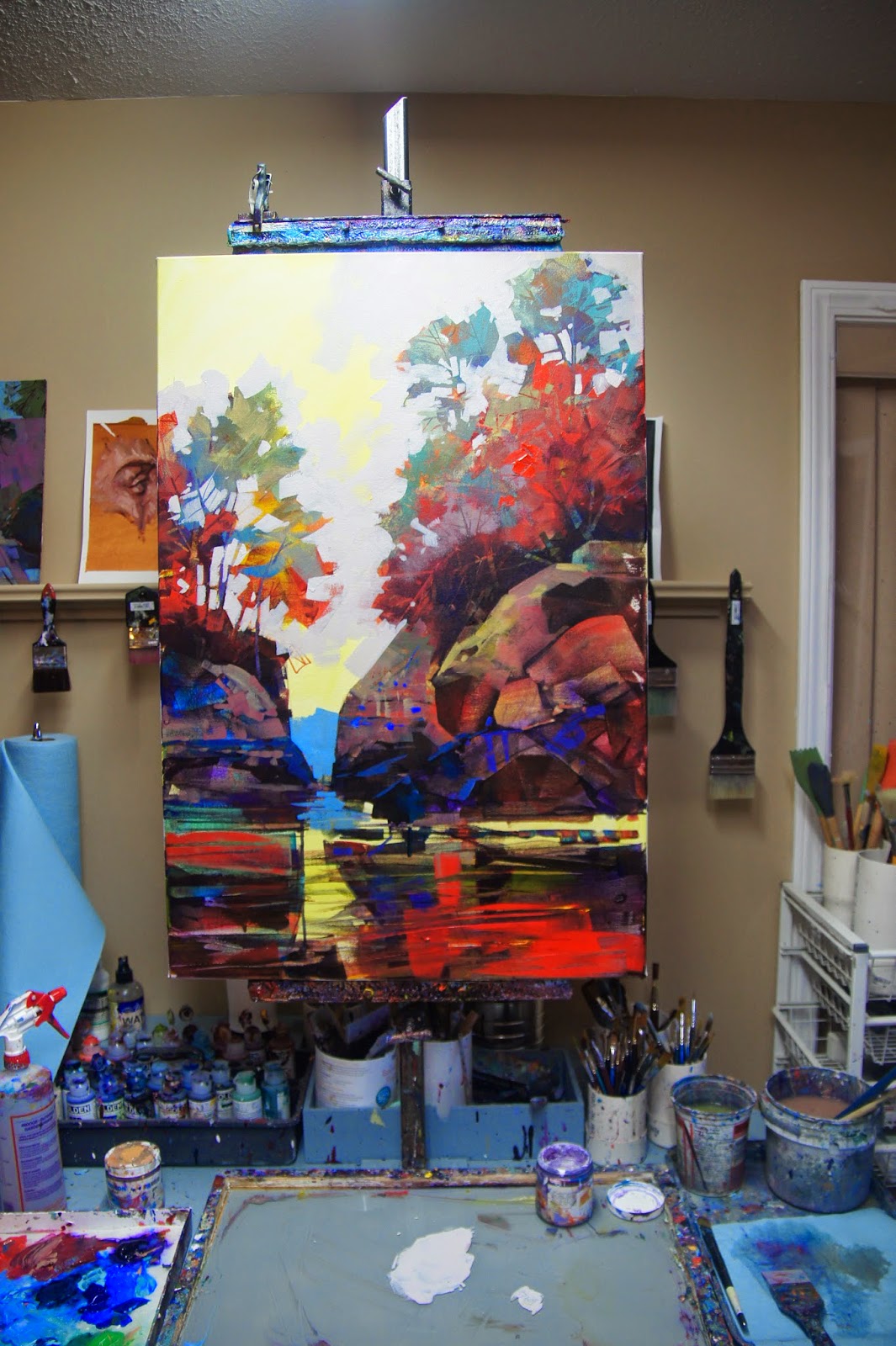 |
| Thick yellow spot laid on then use shaper to draw out edge and lift out to let underpainting through |
Wow, had lot of questions about colour shapers: what are they, where do you get them, can I just use my kitchen spreader????
Colour shapers come in a variety of shapes and sizes. They are rubber - and you can buy rigid (generally black rubber) or more malleable (generally mid value gray). The come from fine tipped to a blade up to 5 inches.
My most useful are 2 and 3 inches. These will do everything that the pointy ended ones do and so much more. For me the pointy ones are next to useless in comparison and they cost almost as much.
I use them to apply paint and to pick out. I will often slap on spot of thick colour then pick out "twiggs or grassed " -see top image. Apply thick paint in a rock area then shape the rock with the shaper - see the base magenta showing through the purple rocks above .
Maybe hard to understand, but in the above detail shows multiple layers picked out showing the one below. Each MUST BE DRY. You can see the green-black added over the lighter greens then shapes and the small holes created. Then the small green tree on the bottom added over the black green tree and the small lines lifted to create the illusion of stems etc. Also those straight lines coming out from the green black are added using the shaper - just gently lifting paint and banging it in place.
And this above I do a LOT. Creating a value underpainting using transparent liquid acrylic - if you enlarge the image you can see where paint was added with the shaper and where it was lofted off - back and forth, back and forth.
Great for applying sweeping strokes on water and waves.
The shaper MUST be clean - front and sides. Then you get a nice clean stroke.
Where to buy: in Canada Opus, Curies and most other have or can get. If you are near me on Vancouver Island, Bonnie at Qualicum Art Supply as brought them in for my workshops. In the US almost all the major suppliers have them. Big range in prices.
 |
| This is what you want! |
 |
| Most people seem to have these - very limited use. |
 |
| Princeton has a new line of rigid and malleable tools - useful but not the same. |
Other "found in the kitchen" shapers will not give you the untility of the commercial ones. But you probably need to try each to see the difference.
Hope that helps. Got to get to the gym.










